Mercedes-Benz C Class Android Auto: Ultimate Power
Ultimate Power unlocks seamless smartphone integration, transforming your Mercedes-Benz C-Class infotainment system. Easily connect your Android device for navigation, music, calls, and more, directly through your car’s display for a smarter, safer driving experience.
Driving your Mercedes-Benz C-Class is an experience in refined luxury, and integrating your digital life should be just as smooth. Sometimes, getting Android Auto to work perfectly can feel a bit tricky. You might wonder if your C-Class even supports it, or how to get your favorite apps like Google Maps and Spotify right on your car’s dashboard.
Don’t worry, it’s simpler than you think! This guide will walk you through everything you need to know to harness the “Ultimate Power” of Android Auto in your C-Class, ensuring a connected and enjoyable drive every time. We’ll cover setup, troubleshooting, and maximizing its potential.
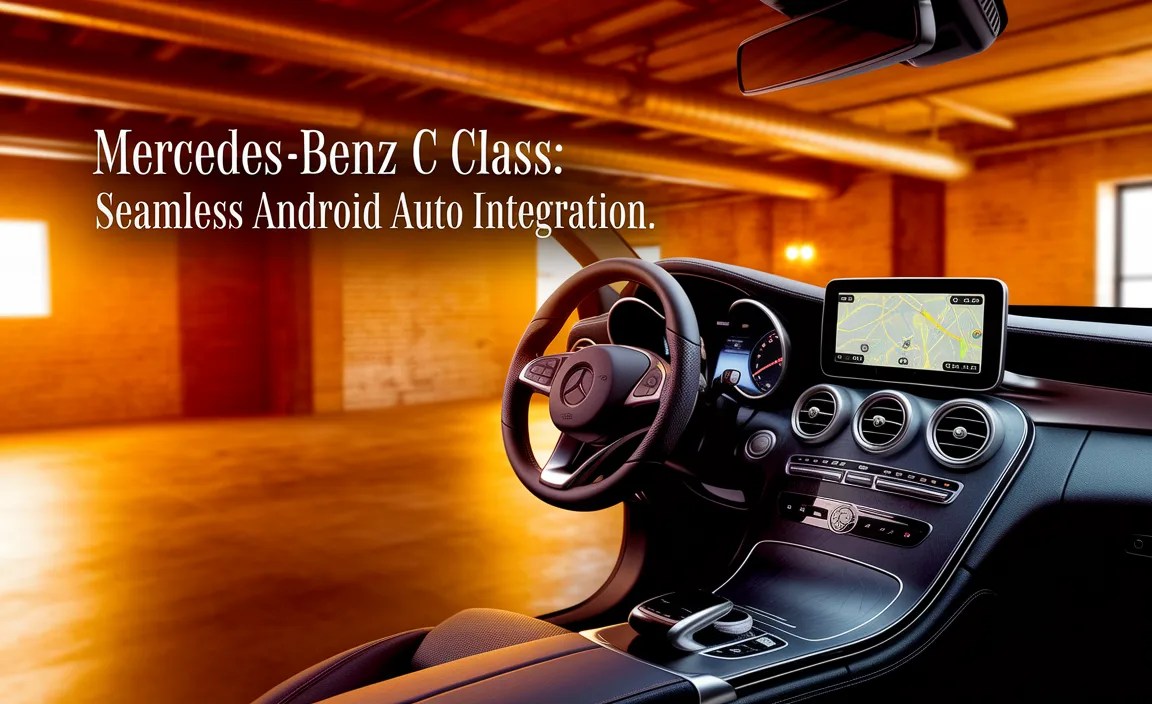
Understanding Android Auto in Your Mercedes-Benz C-Class
Android Auto is a brilliant system that brings the essential features of your Android smartphone to your car’s infotainment screen. Think of it as a simplified, car-friendly version of your phone. It’s designed to minimize distractions and keep your eyes on the road while still giving you access to navigation, music playback, messaging, and making calls.
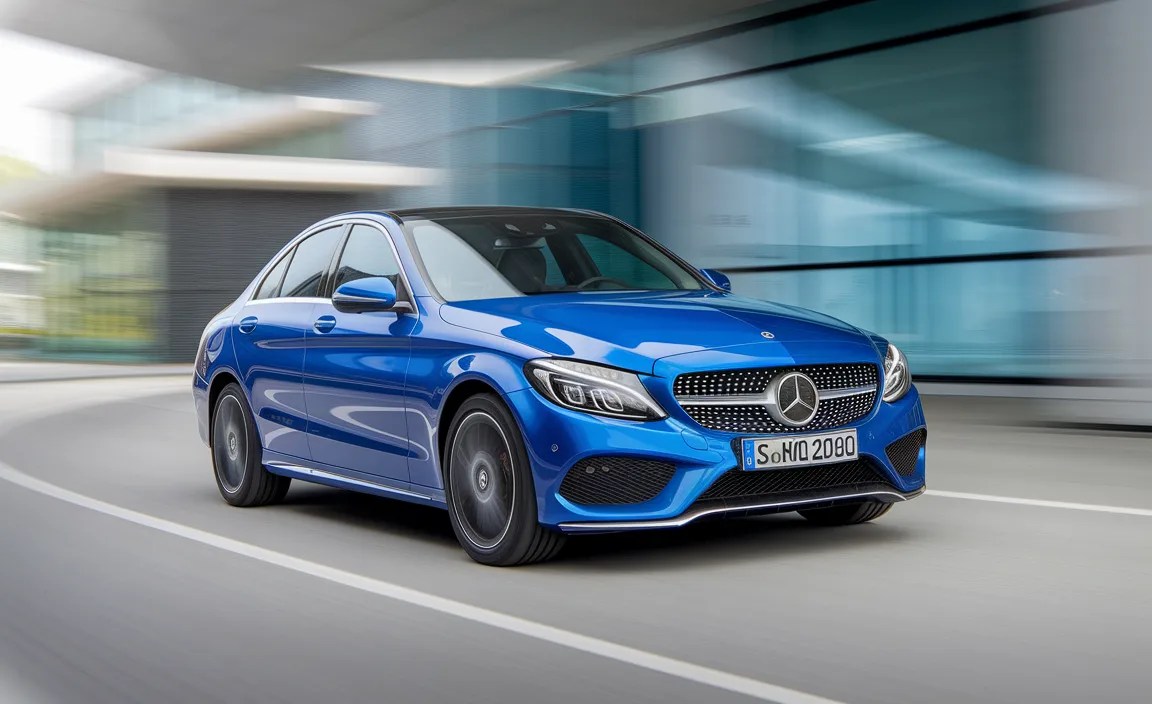
For Mercedes-Benz C-Class owners, this means your already sophisticated vehicle becomes even more connected and intelligent, offering a seamless bridge between your mobile world and your driving experience.
What is Android Auto?
At its core, Android Auto is Google’s platform for extending the Android operating system to vehicle dashboards. It’s not an app you install on your car; rather, it’s a feature of your smartphone that communicates with your car’s display (via USB or wirelessly, depending on your C-Class model and smartphone). This allows you to interact with familiar apps in a larger, more accessible format, controlled by touch, voice commands using Google Assistant, or physical controls in your car.
Why is Android Auto Important for C-Class Drivers?
For a driver of a Mercedes-Benz C-Class, a vehicle synonymous with innovation and comfort, Android Auto is a natural enhancement. It provides:
Intuitive Navigation: Access to Google Maps or Waze with real-time traffic updates directly on your car’s screen.
Seamless Entertainment: Play music, podcasts, or audiobooks from apps like Spotify, Audible, or YouTube Music.
Effortless Communication: Make calls or send messages hands-free using voice commands.
Enhanced Safety: Reduces the need to handle your phone while driving, keeping your attention focused on the road.
Familiar Interface: Uses apps you already know and love, making it easy to learn and use.
Getting Started: Connecting Android Auto in Your C-Class
The process of connecting Android Auto to your Mercedes-Benz C-Class is designed to be straightforward, but a few prerequisites and steps ensure everything runs smoothly.
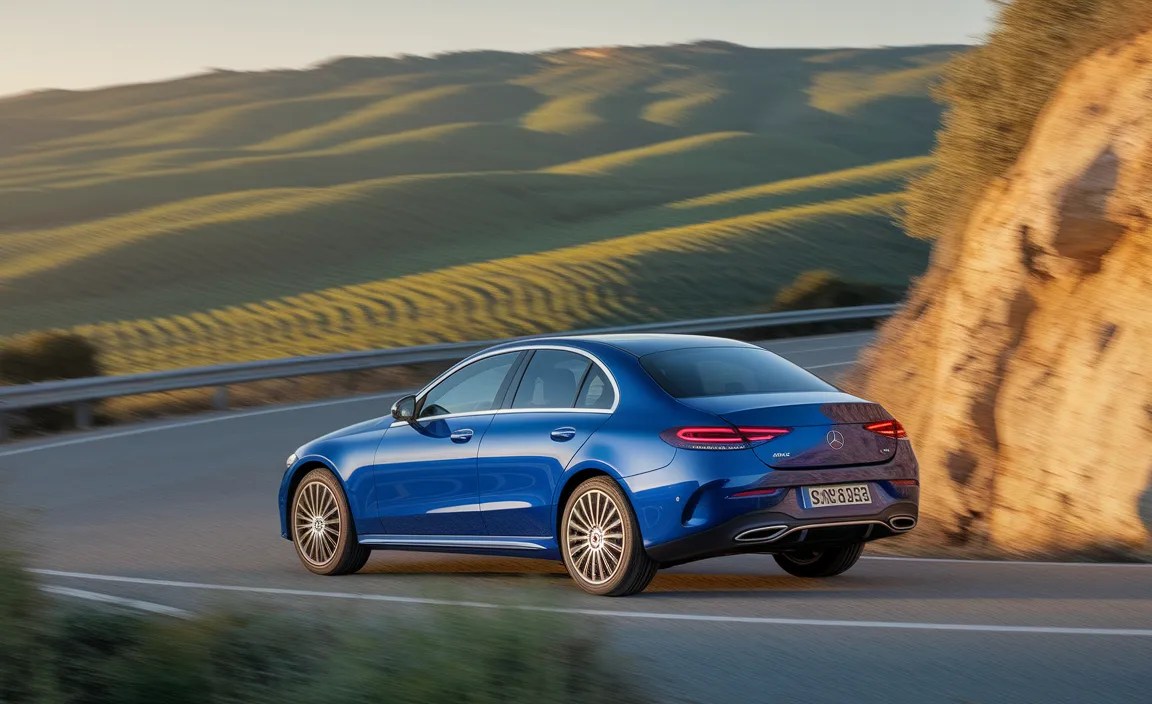
System Requirements and What You’ll Need
Before you begin, make sure you have the following:
Compatible Mercedes-Benz C-Class: Most C-Class models from roughly 2016 onwards are equipped with MBUX (Mercedes-Benz User Experience) or COMAND infotainment systems that support Android Auto. Newer models offer wireless connectivity. You can check your vehicle’s specific trim and year for compatibility on the official Mercedes-Benz website or your owner’s manual.
Android Smartphone: You’ll need an Android phone running Android 6.0 (Marshmallow) or higher. For wireless Android Auto, both your phone and car must support Wi-Fi and Bluetooth.
Android Auto App: For most newer Android phones, the Android Auto app is pre-installed. If not, you can download it from the Google Play Store.
High-Quality USB Cable (for wired connection): A damaged or low-quality USB cable is one of the most common culprits for connection issues. Use a reputable brand cable, preferably the one that came with your phone.
Internet Connection: Needed for initial setup and for many apps to function correctly (e.g., streaming music, live traffic in navigation).
Step-by-Step Connection Guide
The connection process often differs slightly between wired and wireless setups, and between different C-Class model years.
Wired Connection (Most Common for Older Models or Older Phones)
1. Ensure Phone is Ready: Make sure your Android phone is unlocked and that the Android Auto app is updated.
2. Connect to USB: Plug one end of your USB cable into your phone and the other into the designated USB port in your C-Class (usually in the center console or glove compartment).
3. Vehicle Infotainment System: Turn on your car’s ignition or start the engine. Navigate to your Mercedes-Benz infotainment system. Look for an option like “Phone,” “Connect Device,” or directly an “Android Auto” icon.
4. Approve Permissions: On your phone, you’ll likely see prompts asking for permissions. Grant access for things like contacts, location, and messages. This is crucial for Android Auto to function fully.
5. Confirm on Screen: The car’s display should now guide you through confirming the connection. You might need to tap “Accept” or “Agree” to terms and conditions.
6. Launch Android Auto: Once approved, Android Auto should launch automatically. If not, select the Android Auto icon from your car’s main menu.
Wireless Connection (Available on Newer C-Class Models with MBUX)
1. Enable Bluetooth and Wi-Fi: Ensure your phone has both Bluetooth and Wi-Fi turned on.
2. Head Unit Pairing: On your C-Class infotainment system, navigate to the “Phone” menu and select “Connect New Device.” Follow the prompts to make your phone discoverable.
3. Pair via Bluetooth: On your phone, search for Bluetooth devices and select your C-Class from the list. A pairing code should appear on both your phone and the car screen; confirm they match and pair the devices.
4. Configure Android Auto: After Bluetooth pairing, your car should prompt you to set up Android Auto. You might need to confirm permissions on both your phone and the car screen.
5. Wi-Fi Connection: Android Auto often uses the Wi-Fi connection established during Bluetooth pairing for its data transfer, ensuring a stable wireless link.
6. Launch: Once configured, Android Auto will launch wirelessly whenever you start your car, provided your phone is within range and has the necessary settings enabled.
Your Mercedes-Benz Connect service needs to be active for Android Auto to function. Keep this in mind for newer models.
Maximizing Android Auto’s “Ultimate Power”
Once connected, Android Auto offers a wealth of features. Here’s how to make the most of it:
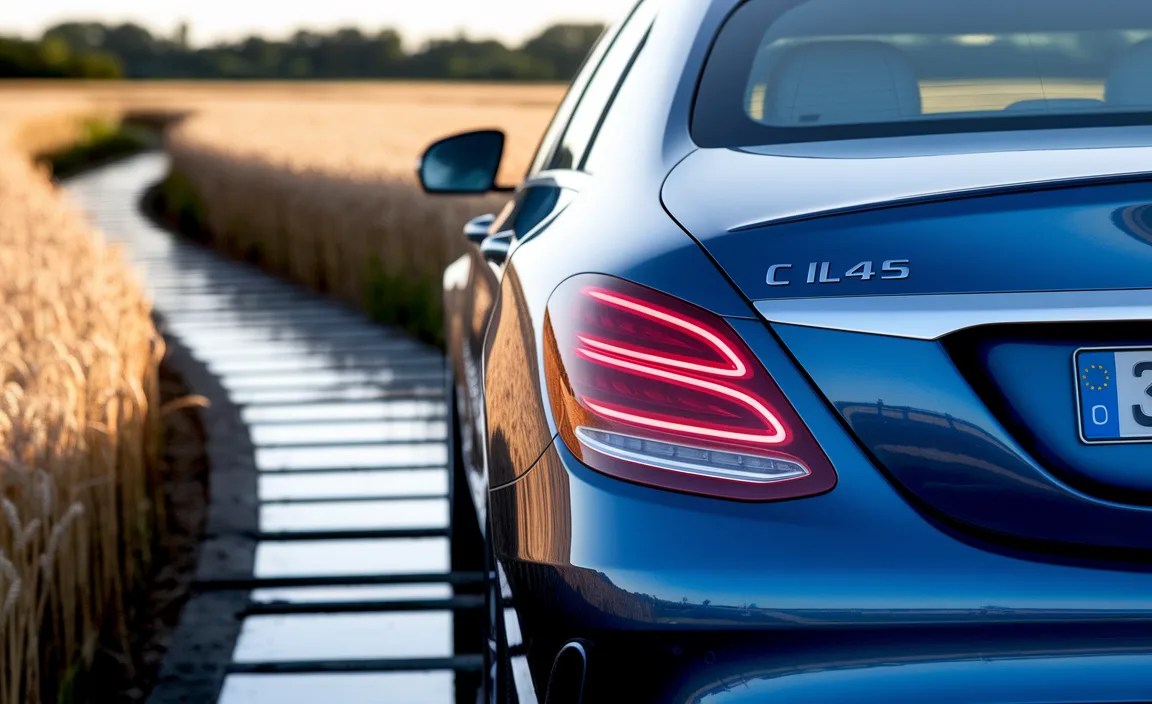
Essential Apps and Their Integration
Android Auto supports a curated list of apps designed for driving. The most popular ones often pre-install or are easily accessible:
Navigation:
Google Maps: Offers detailed navigation, live traffic, Street View, and the ability to search for places easily.
Waze: Known for its community-driven traffic alerts, speed trap warnings, and hazard reporting.
Audio & Entertainment:
Spotify: Access your playlists, albums, and podcasts.
YouTube Music: Stream music and discover new artists.
Audible: Listen to your favorite audiobooks on long drives.
TuneIn Radio: Access thousands of live radio stations from around the world.
Communication:
Google Messages: Send and receive text messages with voice dictation and read-back.
WhatsApp: For many users, WhatsApp is also integrated for messaging and calls.
Phone App: Make and receive calls directly through the car’s interface.
Voice Control with Google Assistant
The true power of Android Auto lies in its voice control. Google Assistant is integrated to help you perform most tasks without taking your hands off the wheel or your eyes off the road.
Initiate Commands: Say “Hey Google” or long-press the voice command button on your steering wheel.
Common Commands:
“Navigate to [Address]” or “Find [Business Name]”
“Play [Song Name] by [Artist]” or “Play my [Playlist Name] playlist”
“Call [Contact Name]” or “Text [Contact Name] [Your Message]”
“What’s the weather like?”
“Set a reminder for [Time]”
Customizing Your Android Auto Experience
You can tailor Android Auto to your preferences:
Rearranging App Icons: On your phone, open the Android Auto app. Go to “Customize launcher” to drag and drop app icons into your preferred order. Apps shown are those compatible with Android Auto.
Choosing Default Navigation: Decide if you prefer Google Maps, Waze, or another compatible app as your primary navigation tool. This can usually be set within the Android Auto app settings on your phone.
Enabling Wireless Android Auto: For compatible vehicles and phones, ensure wireless Android Auto is enabled in the Android Auto app settings on your phone. You might need to start a wired connection first to enable this setting permanently.
Troubleshooting Common Android Auto Issues in the C-Class
Even with the best technology, hiccups can occur. Here are solutions to common problems you might face with Android Auto in your C-Class.
Connection Problems
Phone Not Detected:
Check USB Cable: Try a different, high-quality USB cable. Ensure it’s securely plugged in at both ends.
Restart Phone and Car: Sometimes a simple restart resolves temporary glitches.
Check Car’s Infotainment: Ensure you’ve selected the correct input or enabled Android Auto in your car’s settings.
Update Software: Make sure your phone’s Android OS and the Android Auto app are updated to the latest versions. Also, check if your Mercedes-Benz has any available infotainment system software updates from the dealer.
Intermittent Disconnections:
USB Port Issues: Try a different USB port in your C-Class if available.
Phone Overheating: High temperatures can cause devices to throttle or disconnect.
App Conflict: Other apps running in the background on your phone might interfere. Close unnecessary applications.
Wireless Interference: For wireless connections, ensure there aren’t too many other active Wi-Fi or Bluetooth devices causing interference.
App Not Working Properly
App Not Showing Up:
Compatibility: Ensure the app is officially supported by Android Auto.
Permissions: Double-check that you’ve granted all necessary permissions to the app and Android Auto on your phone.
App Updates: Make sure the specific app you’re trying to use is updated to its latest version.
App Freezing or Crashing:
Clear Cache: On your phone, go to Settings > Apps > Android Auto > Storage > Clear Cache and Clear Data. You may need to re-setup Android Auto afterward.
Reinstall App: Uninstall and then reinstall the problematic app from the Google Play Store.
Voice Commands Not Responding
Microphone Issues: Check if your phone’s microphone is clear and unobstructed.
Google Assistant Settings: Ensure Google Assistant is enabled and properly configured on your phone.
Permissions: Confirm that Android Auto has permission to access your microphone.
A helpful resource for troubleshooting vehicle connectivity issues can be found from the official Android Auto Help site.
Comparing Wired vs. Wireless Android Auto in the C-Class
The choice between wired and wireless Android Auto often depends on your C-Class model year and personal preference, with each offering distinct advantages.
| Feature | Wired Android Auto | Wireless Android Auto |
| :—————— | :————————————————— | :——————————————————– |
| Connection | USB cable | Wi-Fi and Bluetooth |
| Setup Speed | Typically faster initial setup | Can take slightly longer for initial pairing |
| Reliability | Generally more stable, less susceptible to interference | Can sometimes be prone to intermittent drops |
| Charging | Simultaneously charges your phone | Does not charge your phone (can drain battery over time) |
| Compatibility | Works with most Android Auto-capable cars and phones | Requires newer car infotainment and phone support |
| Convenience | Requires plugging in | No cables needed, just get in and go |
| App Performance | Often slightly quicker response times | May experience minor lag in response times |
| Initial Cost | Included with car; requires good USB cable | Often requires specific trim level or optional package |
For long drives, the charging benefit of wired Android Auto is significant. However, the sheer convenience of wireless connectivity, especially for frequent short trips, is hard to beat. If your C-Class and phone support wireless, it offers a truly seamless experience once set up.
Future-Proofing Your C-Class with Android Auto Updates
Google and Mercedes-Benz are continuously refining the infotainment experience. Staying updated ensures you benefit from the latest features, security enhancements, and performance improvements.
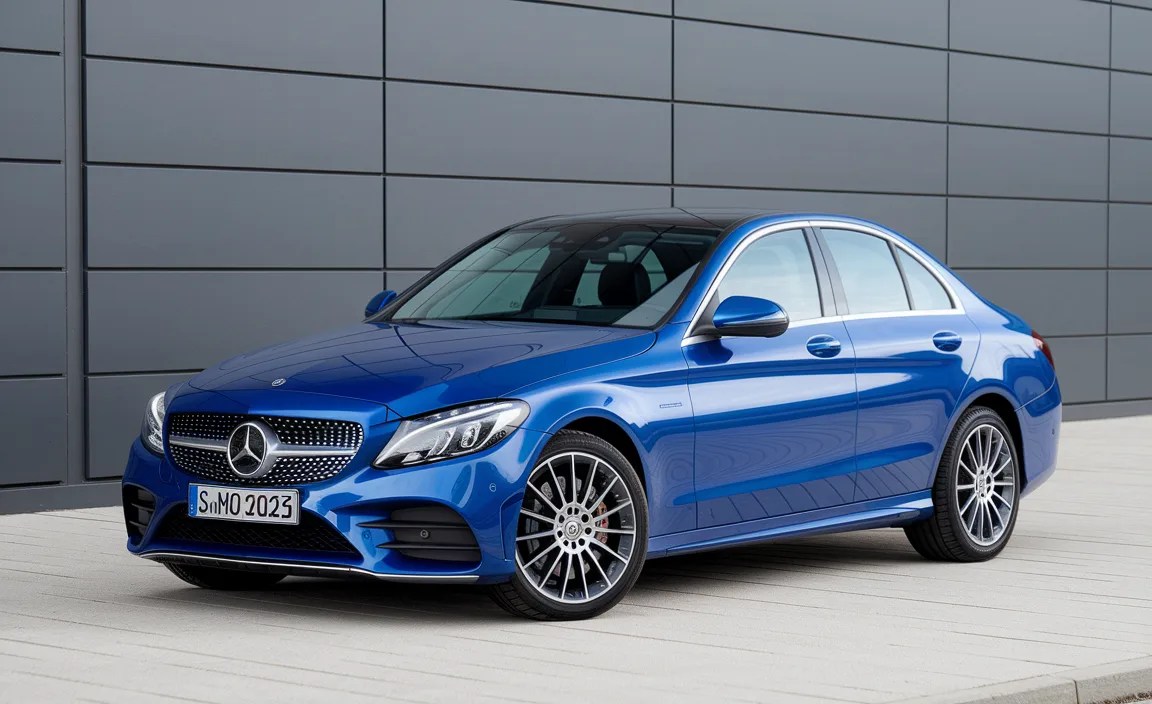
Automatic App Updates: Ensure your Android Auto app and related Google apps are set to update automatically via the Google Play Store.
Infotainment Software: Periodically check with your Mercedes-Benz dealer or the Mercedes-Benz owner portal for any available updates to your car’s infotainment system software. These updates can sometimes improve compatibility and performance with the latest smartphone technologies.
* Android OS Updates: Keep your Android smartphone’s operating system updated. Major OS updates often improve how the phone interacts with external systems like Android Auto.
Staying on top of these updates is key to ensuring your C-Class’s technology remains cutting-edge.
Conclusion: Your Connected C-Class Experience Awaits
Harnessing the “Ultimate Power” of Android Auto in your Mercedes-Benz C-Class unlocks a more convenient, enjoyable, and safer driving experience. By understanding how to connect, safely use its features, and troubleshoot common issues, you can seamlessly integrate your digital life with your luxurious drive.
Whether you’re navigating new routes, enjoying your favorite soundtrack, or staying in touch on the go, Android Auto transforms your C-Class into an even more intelligent and connected companion. Follow these steps, explore the possibilities, and elevate every journey.
Frequently Asked Questions (FAQ)
Can I use Android Auto if my C-Class is older than 2016?
For most Mercedes-Benz C-Class models prior to 2016, Android Auto was not available. The integration typically began with the introduction of the COMAND 5.0 or MBUX infotainment systems. You can verify your specific vehicle’s compatibility in its owner’s manual or by contacting a Mercedes-Benz dealer.
Do I need to pay extra for Android Auto in my C-Class?
Typically, Android Auto is a standard feature if your C-Class is equipped with a compatible infotainment system. However, for wireless Android Auto functionality, it might be part of an optional technology package or a specific trim level depending on the model year.
How to make Android Auto run wirelessly?
To enable wireless Android Auto, your Mercedes-Benz C-Class must be equipped with the feature, usually on models with MBUX infotainment. Your smartphone also needs to support wireless Android Auto functionality (most newer Android phones do). Ensure Bluetooth and Wi-Fi are enabled on your phone and follow the pairing process as described above.
Can I use Apple CarPlay and Android Auto at the same time?
No, your C-Class infotainment system typically supports either Apple CarPlay or Android Auto at any given time, but not both simultaneously. You’ll need to select which platform you want to use from your phone settings or the car’s menu.
Is it safe to use Android Auto?
Yes, Android Auto is designed with safety as a priority. It offers a simplified interface, larger icons, and robust voice command capabilities through Google Assistant, allowing you to keep your hands on the wheel and eyes on the road while managing navigation, music, and communication.
My phone charges very slowly when plugged into the car for Android Auto. Why?
Some car USB ports are designed for data transfer rather than high-speed charging. If you’re experiencing slow charging, it’s likely due to the port’s power output. Using a higher-quality USB cable and ensuring your phone’s charging settings are not optimized for low power can help. For faster charging, you might need to use a car-specific charger adapter in a 12V socket.
What happens if I update my phone’s software and Android Auto stops working?
While rare, sometimes operating system updates can cause temporary compatibility issues. If this happens, try clearing the Android Auto app cache and data on your phone, or uninstalling and reinstalling the app. Ensure your car’s infotainment system is also up-to-date. If problems persist, contact Mercedes-Benz support or Google’s Android Auto support.






